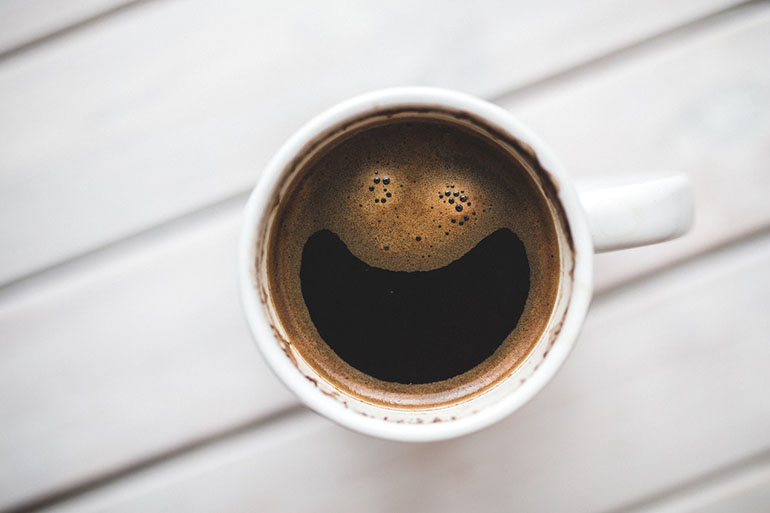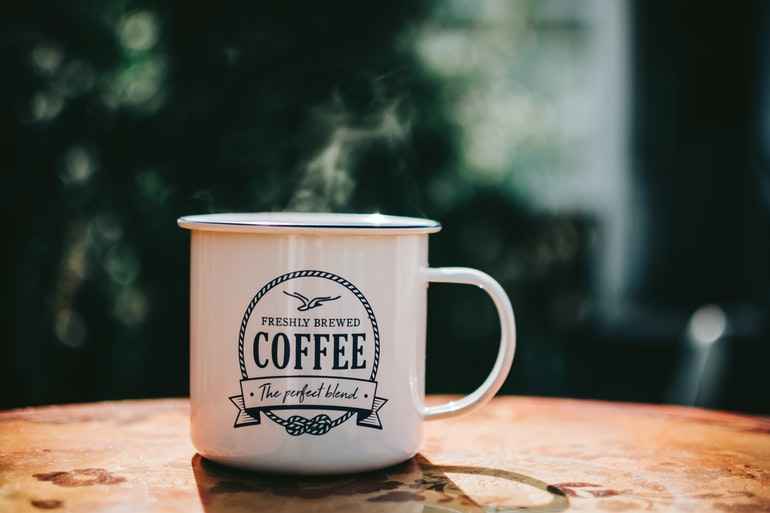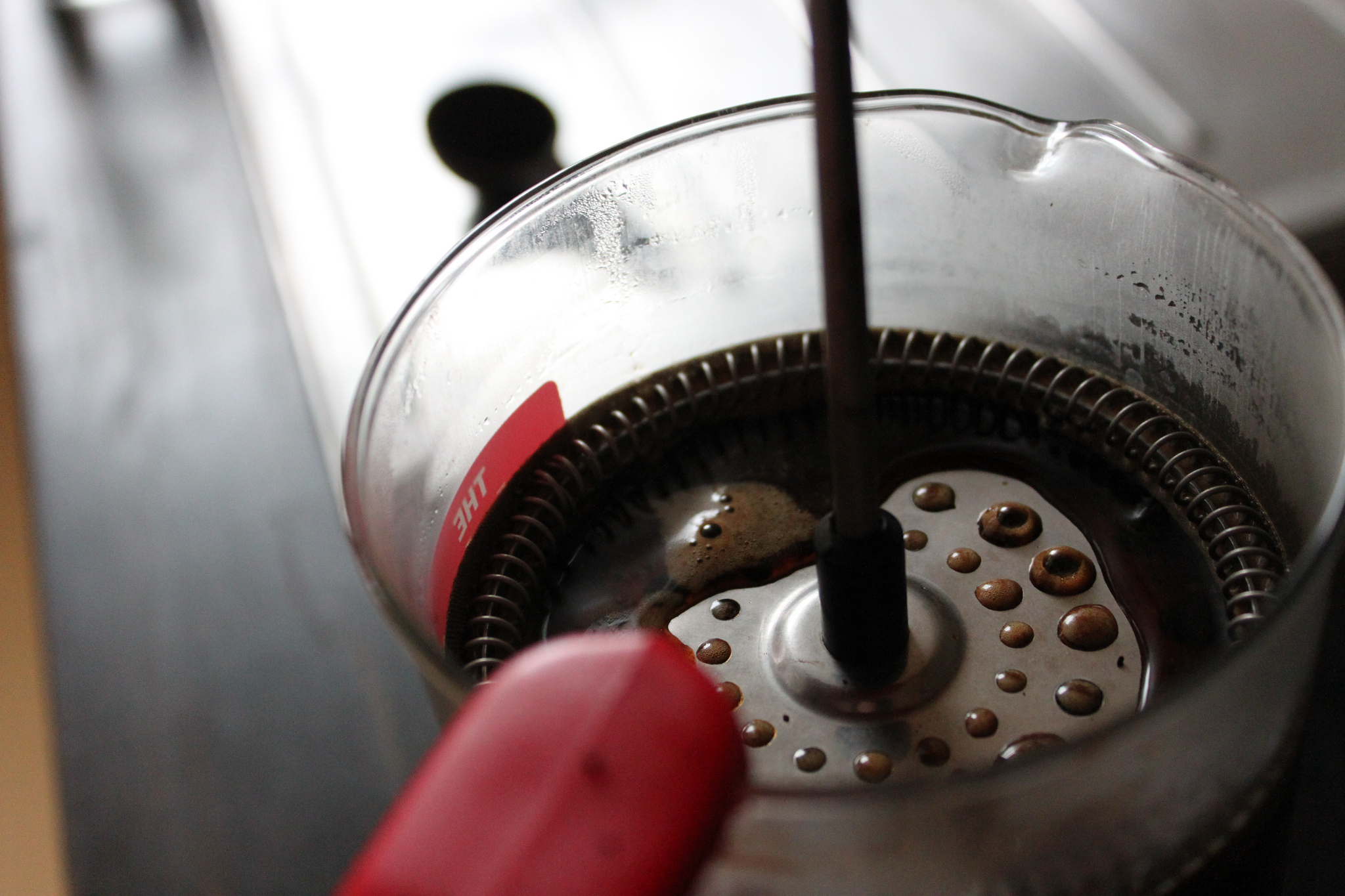Despite how delicious it is, a lot of people are put off attempting to make it due to its long brewing time and the impression that it’s overly complicated. In the case of the latter, nothing could be further from the truth.
Cold brew coffee is easy to prepare and can last you for the whole week, meaning you can have refreshing cold coffee on the go instantly. In reality it takes about 10 minutes to prepare and then brewing time of between 14 and 16 hours. It’s extremely easy to make in bulk.
This isn’t just about having chilled coffee on the go however. It’s also about the flavor. Cold Brew is really unique compared to other brewing methods. Its use of cold water means that the acidity in the coffee isn’t dispersed as easily, making your coffee taste less acidic. Cold brew coffee is 60 to 65% less acidic than through other, hot water-based, brewing methods.
What you will need
You’re going to need a few items, however the best part is that you don’t need to leave your house to purchase any of them. They’re all very easily available online, and relatively low cost.
Firstly, you’ll need a large liquid container. You can just use one that you have lying around at home, however i’d really recommend getting something specifically for cold brew coffee. You can find a one gallon jar on Amazon for not very much money. Ultimately the container you use is completely up to you, however a 1 gallon jug usually lasts me between 1 and 2 weeks.
If you don’t have a 1 gallon jug and don’t worry you can use whatever size you want just be sure to scale down your recipe.
Next, you will need a Burr grinder. The reason I like to use a Burr grinder, especially for cold brew, is because we really want a fairly consistent grind. Unfortunately blade grinders just can’t guarantee the consistency that we need for cold brew coffee, let alone other brewing methods.
You can buy either manual Burr grinders or electric Burr grinders. Some people prefer manual Burr grinders because they are slightly cheaper and carry more of that ‘vintage’ look that looks great in a lot of kitchen (and you can even burn a few calories while using them!). Personally I use an electric Burr grinder because it’s easy and reliable.
Regardless of whether you go for a manual Burr grinder or electric Burr grinder the results will be superior to that of a blade grinder. What I mean by superior is that not only will they be consistent but you will be able to extract more coffee soluble from your grounds if you use a Burr grinder.
The third thing you will need is a filter. For a lot of brewing methods, including pour over brewing, we tend to use disposable paper filters. These filters we only use once and are perfect for pour over brewing, however for cold brew because the brew time is so much longer than poor over we need something stronger and more durable than paper filters, so what we need is a multi-use strainer to act as a filter. These are fairly inexpensive and easily available on Amazon.
The final thing we need is an obvious one: Coffee. You can use pre ground coffee if you wish or if you don’t have a grinder, however I always prefer to buy beans and grind them manually. The reason for this is that it ensures that the coffee that you are extracting is much more full of flavour and aroma. Also, a lot of pre-ground coffee comes as a medium or fine grind, which is really not what we want for cold brew.
Using pre ground coffee might be quicker and more convenient however it’s always much more still in flavour. I recommend making a little extra effort and going for whole bean coffee.
So let’s make this!
How to make cold brew coffee at home
Start by placing a medium-sized bowl on electric kitchen scales and measure out your coffee beans. If you are following my recipe and making a gallon of cold brew coffee then you will want to add 8 ounces (225g) of whole coffee beans.
Once you have measured out your whole beans, start to grind them to a coarse consistency. Once ground, pour them into a medium sized bowl. You might not be able to fit all of the beans into your grinder at once, especially if it’s a manual grinder so be prepared to do this process a few times until you have you have ground all of your beans
Next open up your strainer bag and then pour your coffee grounds into it. Be very careful not to spill any outside of the bag. Once the grounds are in the bag then use the draw string to close it. Place it in your 1 gallon jug, and start to add 1 gallon of cold water.
Make sure that the top end of your bag sticks out a little bit so that the grounds don’t fall out into the water. Put the lid of your gallon jar on top and then put the jar in the fridge to leave it to brew. This is 14 to 16 hours. If you are leaving it overnight then be mindful of time as it’s really important to not let it go over 16 hours, otherwise it will over extract and be horribly bitter.
After 14 to 16 hours, remove your ground coffee from the jar. If you are using a strainer bag then when you remove it from the water be sure to try and strain out as much residual liquid as possible. Discard the bag with the grounds in either to the side or into your garbage
Either serve up your cold brew into separate bottles or jars for easy access, or leave it in the gallon jar to access as and when you need it. If you’re not sure what type of bottle or jar to use for serving I can recommend mason jars, which again are easily available from Amazon.
And that’s it! Here are a couple of quick tips to help you get the most out of your cold brew:
Pay attention to roast type. Aim to use a darker roast over lighter because dark roasts have more acidity to them, which will mix with the cold brewing method to balance out at a good acidity level.
Secondly, if you like to add a bit of flavor to your coffee then try to use artificial flavouring to mix up flavours of your coffee. These flavours could be vanilla orange coconut, whichever you prefer.
Thirdly, be really careful not to over brew it. 14 to 16 hours is a long time but if you go over that then you risk your coffee becoming overly bitter and it would be a shame to ruin all of that effort because of over extraction. So be especially careful if you are leaving it overnight and make sure to factor in that time to your 14 to 16 hour target.
Next you don’t necessarily have to put it in the fridge. I just prefer to put it in the fridge because then it’s cold straight away. If you don’t have space in your fridge that’s not a problem at all. You can simply put it in a cupboard or on your kitchen counter. However when you can serve it I would strongly recommend serving over ice, or serve it into smaller containers and store those in the fridge.
Finally, cold brew coffee will stay fresh enough for up to 2 weeks after extraction, giving you plenty of time to enjoy this fresh coffee treat.
Want to try another method? Learn how to make cold brew in a French Press.
Cold Brew vs Ice Coffee
It can be easy to confuse cold brew coffee and iced coffee, but there are actually quite a few major differences between the two.
One of the main differences is that they are prepared very differently. Iced coffee is first prepared just like any other type of hot coffee, which is then cooled and served over ice. Cold brew coffee however is brewed and extracted at a cold temperature in cold water. Extraction time for this is a very long time of between 14 and 16 hours.
Find out how to make iced coffee at home
Another big difference is that the levels of acidity between the two are very different. Because iced coffee is prepared just like normal coffee the acidity is quite high, however for cold brew coffee the acidity level is actually about 60% lower than iced coffee. The reason for this is that the water being used is much more active, which means that it doesn’t extract as many of the acidic compounds from the coffee.
Iced coffee tends to be much easier to make because you only need hot coffee, ice cubes, and somewhere to chill the coffee. However for cold brew coffee you do need a couple of special bits of equipment in order to facilitate the long cold brewing method.
While this might sound like a big advantage there are actually a couple of disadvantages to iced coffee. One is that it very easily creates acidic and bitter flavour profiles, and the other is that a significant temperature change between brewing at a hot temperature to then pouring it into a cold state means that the flavours of the coffee can be spoiled quite easily.
Despite the fact that it takes a long time to make cold brew coffee, it’s actually very straightforward. Obviously there’s a significant time investment, however if you can see past that then there are some real advantages to making it. One is that it has a very smooth flavour profile, partly due to its very low acidity levels. You will need a container or large jug to brew it so there is some need for speciality equipment, but these are very affordable and relatively cheap to get from Amazon.
If you are a bit of a caffeine junkie like me then another thing that I really like about cold brew coffee is that it releases caffeine much slower which means it stays with you for longer in the day, helping to prevent the likelihood of a caffeine crash in the afternoon. For similar reasons some people who experience stomach discomfort with coffee actually find cold brew coffee much more easy on their system.
Another thing I really like about it is that you can store it fresh for around 2 to 3 weeks in your fridge, so if you make it in bulk then you have a good supply for quite a while
So what’s the science behind it tasting so good?
A lot of fans of cold brew coffee claim that not only does it taste great but it’s much smoother and less acidic than other forms of brewed coffee. This is quite a bold claim so is there any substance to it?
Coffee beans are comprised of a lot of different chemical compounds, and the process of brewing coffee is essentially extracting these compounds into the water and turning it into the desired flavours and aromas that we associate with coffee. While there are lots of different variables that contribute to this, two of the most significant are temperature and time.
Both of these variables are significantly different for cold brew coffee than they are for other forms of coffee. While pour-over coffee takes about 5 minutes to brew, cold brew coffee takes around 14 hours.
Similarly different is temperature. So for normal methods we might try to use water that is around 190 degrees Farenheit, for cold brew coffee we use cold water which is obviously much lower in temperature. A combination of these two very, very different variables means that we end up with a flavour profile that’s very different to hot brewed coffee.
With hot water the compounds found within the coffee beans are released very quickly because the water is so active. The high temperature also means that the acidic oils degrade and oxidize significantly more quickly than cold brew coffee. This in turn can really emphasise the acidity and bitterness levels in the coffee.
In contrast cold brew coffee is done much more subtly and slowly, which means that despite their long brewing temperature the resulting flavours are much smoother and mellower because the acidic compounds aren’t as evident in the resulting coughing. in fact the sweeter compounds found within coffee tend to be evident in cold brew methods however the oils associated with acidity won’t be.
This is not to say that cold brew coffee is weak, because the water and ground ratio and caffeine content is actually still quite high but it’s just that its flavour profile is not as harsh or bitter.
This actually means that sometimes you can use all the coffee for cold brew methods because often with all the coffee the stale nature of it means that the bitterness is much more profound in the coffee cup however this obviously isn’t much of an issue with cold brew methods



